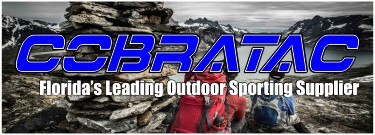We are getting lots of questions about the Nitride lined bores and if they are better than chrome lined bores... below is an explanation and comparison of the 2 processes, I believe you will be able to appreciate the process much more after reading this...
See Our Line of Nitride Barrels

Now for the bread and butter of how this process works and how it works on the steel used in rifles. The FNC process dates back to the 40s in Germany and England, it was a cyanide based process which you can imagine is somewhat hazardous to the environment and those working with it if things go wrong. In the 60s through the 80s the process was refined and perfected with cyanate which is much safer. Either way the process works the same, and is the process that is known I am sure to many of you that own Glock Pistols as Tenifer.
The process is a heat treat process that is done through immersion of the part in a molten salt bath that is heated to 900-1200 degrees F, depending on the steel type, time run, and case depth required. The normal temps for steel in the gun industry is from around 975 to 1100. The process uses cyanate salts to dissolve nitrogen and carbon into the steel forming a two part surface layer, an iron nitride layer, and nitrogen diffusion layer, which gives a hardened surface without hardening the core. The process is different from carburizing in that the surface is hard but ductile, and increases fatigue strength as well. The typical case depth of the parts for the gun industry is around .0004 to .001 with a residual hardness tapering to core hardness over a depth of .012 to .020.... For barrels specifically the case in my experience should be .0004 to .0008 for best performance in increasing barrel life. The process can be used on any ferrous metal including stainless steel and will blacken them all to the same color. Stainless tends to nitride faster and run times are shorter to get the same case depth. stainless slides and barrels are made every day for very very large OEM contracts and it works very well.
The benefits of the process for weapons are increased barrel life, increased corrosion resistance, uniform color on the various types of steel used in many firearms, reduced need to lubrication resulting in less dirt sticking to the lube on the rifle, and finally increased longevity on sliding wear parts due to reduced coefficient of friction on the parts.
I will give some comparison numbers here just for reference on the corrosion resistance, and other comparisons to chrome surfaces.
| ATSM B-117 Salt Spray Hours exposed and Percent Corroded 1. Hrd chrme 72hrs Appx 62% 2. Hrd Chrme 88hrs Appx 80% 3. Full QPQ nitride 336hrs Appx 10% 4. Nitride non QPQ 88Hrs Appx 5% |  |
So you can see that the process is much more corrosion resistant than hard chrome even if you dont do a full QPQ. you must do the the full QPQ on all gun parts to get the maximum corrosion resistance and best appearance on all parts.
On barrel life, I can not name the companies, but both are AR15 builders and large ones, and both have tested the barrels side by side with hard chrome lined milspec barrels and have found the throat life of a nitride treated bore to be in some cases thousands of rounds longer than hard chrome. Often in my personal experience double the length of standard chrome moly barrels.
Added performance:
The last benefit I will mention is that your velocity will likely go up and chamber pressure down a bit due to reduced friction. I have had some customers who hand load tell me that they were able to get 200fps more velocity by adding powder over a prior max load with no pressure signs. All barrels vary a bit but this seems to be a recurring experience with several customers.
